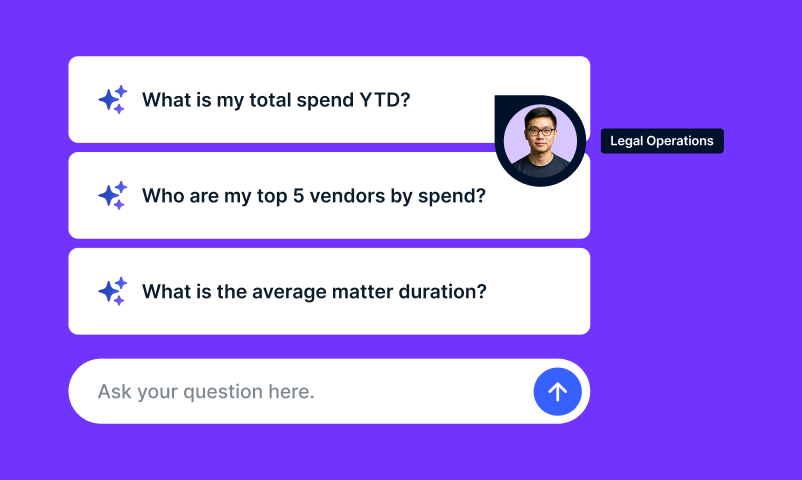Data analysis is crucial to understanding market trends and your business. Here are the keys to why legal leaders must capitalize on critical data to increase visibility, improve forecasting, and create continuous competitive advantage — ultimately transforming Legal from a cost center to a strategic, materially impactful powerhouse.
Data, it has often been said, is the new oil as it is a commodity of immense worth. It is a resource that must be protected, and if left unrefined, it holds no true value. But when mined, data can illuminate our lives, our businesses, and our world.
In the third and final chapter of the Enterprise Legal Reputation (ELR) Report, the multinational study* showcases the untapped potential of legal operations to be a change agent in driving meaningful business results. While the report determined that eight in ten (79%) enterprise employees do not see Legal as a modern operation, it also uncovered that technology acts as a catalyst for evolution for businesses and practitioners who wish to differentiate and grow.
Data can be like oil. Yet unlike oil, data has the potential to be infinite, shared to every corner of the planet literally at the speed of light. And, far from crude, data is a sophisticated tool available to everyone in the form of transformative digitalized technology, like artificial intelligence (AI), predictive analytics solutions, and business process automation (BPA).
Why data matters for Legal
Traditionally, Legal has not been required to quantify key performance indicators (KPIs) and return on investment (ROI) with the same rigor as other functional groups. However, the ELR Report revealed that two in three (64%) legal respondents are unable to track all outside counsel spend — and one in 25 (4%) cannot track it at all. In fact, the average department can track just three-fifths (60%) of outside spend at most; in Germany, this figure rises to two-thirds (66%), and in the United States and United Kingdom, it drops to less than half (53%).
Now is the time for Legal to become a true business driver. But to create greater operational wins, accelerate revenue acquisition, and function in an efficient and modern capacity that demonstrates market intelligence, Legal must develop transparent quantitative metrics and report regularly, just like Sales may conduct weekly pipeline calls or Finance faces quarterly reviews. Legal must quantify its performance – and that requires its own systems of record that capitalize on critical data to increase visibility, improve forecasting, and assist in decision-making.
Here are three essential ways harnessing data can assist in your legal department’s evolution:
1. Data optimizes wiser cost containment.
The ability to maintain and monitor total visibility of your legal spend data in real time — and to make changes instantly and agilely, based on ever-changing industry trends — is vital, principally in our current macroeconomic climate.
Benchmarking cannot reel in inflation, but integrating state-of-the-art matter and rate benchmarking solutions can identify waste and streamline budgeting and rate reviews. Although less than one in two (48%) legal professionals use e-billing and spend optimization solutions at this time, data solutions that track specific, high-level metrics can calculate projected savings automatically — and the insights gleaned can provide not only a complete overview of financial data now, but also ensure upcoming hiring decisions and forecast spend are cost-efficient.
2. Data solidifies partnerships, today and tomorrow.
Every business is, first and foremost, a collection of people. Without inherently human vision, ingenuity, and expertise, there could be no corporate success.
The ELR Report showed that four in five (80%) of employees believe Legal excels at procuring vendors and services. Analyzing data via business intelligence software takes this to the next level, creating “big picture” awareness for comparison of partners — juxtaposed against each other, as well as collated with wider legal industry data — in order to establish performance evaluation standards and highlight areas requiring change. That way, Legal can initiate more honest, fact-based conversations about what it needs to strengthen collaboration, productivity, and growth moving forward.
3. Data can uncover a gold mine of revenue leakage.
Though critical for risk mitigation, contracts tend to be overwhelmingly time-consuming. According to the ELR Report, most legal respondents spend at least half their time (4 to 5 hours each day!) reviewing and managing contracts. But AI-powered contract lifecycle management (CLM) can redline a contract in under two minutes, automatically escalating issues if needed.
While only half (54%) of legal professionals say their contract processes are currently automated, by exploring all data avenues — and molding data into actionable information — Legal will find themselves with more free time to do the type of high-level, client-based, and intellectual work that matters most to businesses: extracting novel opportunities for material growth via innovation and competitive differentiation.
Legal in the spotlight
Simply put, one cannot effectively manage what one does not measure. Data might be perceived as “the new oil” in various ways, but one vast difference emerges in particular: Oil is a limited asset, whereas the more data is utilized, the more advantageous it can become.
Knowing how to harness data can elevate Legal’s value throughout the enterprise, bolstering the department’s brand image as a business partner and corporate rainmaker. Unleashing insights and actions derived from that data builds a lasting foundation, predicting paths for what lies ahead: Legal making its mark materially across every aspect of business, from topline revenue generation to bottom-line cost and operational efficiencies, with an eye firmly on the future.
Read the ELR Report to learn more about how legal professionals view their relationships with internal clients in comparison to the image enterprise employees have of their legal departments and how Legal can evolve to prove material impact and improve efficiencies across the business.
*The ELR Report is a third-party, multinational study of 4,000 enterprise employees and 500 corporate legal professionals across the United States, United Kingdom, France, and Germany intended to showcase relationship dynamics and perceived image between corporate legal teams and enterprise organizations.




